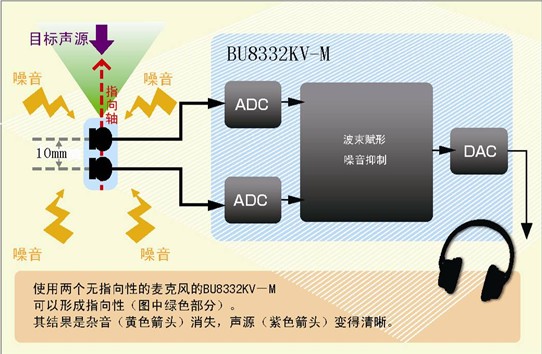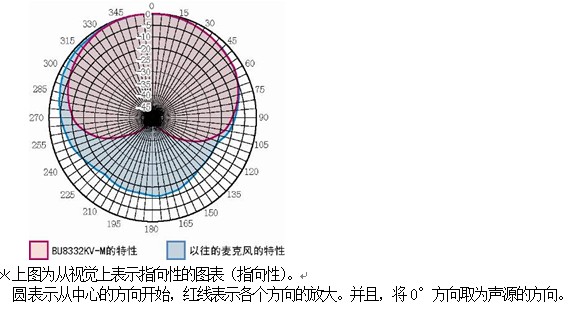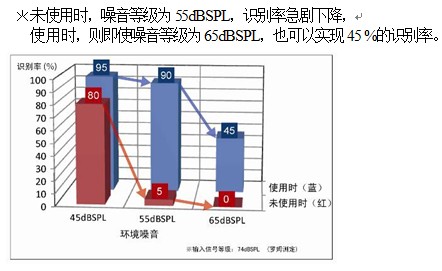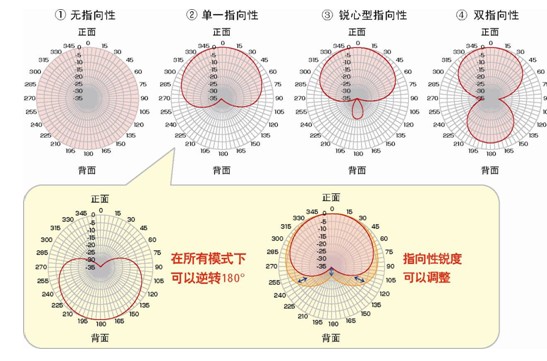ROHM develops digital signal processing IC "BU8332KV-M"
21ic News Japan's leading semiconductor manufacturer Rom (headquartered in Kyoto, Japan) for microphones used in devices such as smartphones and car navigation systems, developed a sharp directivity (beamforming) for two non-directional microphones Technology), digital signal processing IC "BU8332KV-M" that improves voice quality.
This article refers to the address: http://
This product uses beamforming technology to form directivity, which reduces the ambient noise because it points the direction of the axis to the sound source. The noise suppression function further reduces the fixed noise remaining in the direction of the pointing axis. This technique, unlike techniques that use only noise cancellation, can place more emphasis on sound sources. Moreover, since two microphones can be mounted at a narrow pitch of only 10 mm, they can be built in various small devices typified by smartphones. Through the optimization process, the beamforming technology can control the processing delay time in use to be less than 10 msec, so that the influence on other applications is controlled to a minimum. Through these measures, it helps to improve the speech recognition rate of various devices and improve the quality of hands-free calls.
The production base of the pre-process is in Roma Co., Ltd. (Kyoto, Japan), and the post-process is carried out in ROHM Electronics Philippines, Inc. (Philippines). Since August, it has been put into mass production with a monthly capacity of 80,000.

In recent years, with the development of speech recognition technology, voice input systems are widely used in mobile devices such as car navigation systems and smart phones, and will be extended to home appliances in the future. In addition, under the global business model, video calling and video conferencing are becoming more frequent, and it is imperative to develop better sound pickup technology in the future.
In this trend, the sound pickup technology needs to make the sound source clearer. So far, the directional microphone can only form directivity through the physical structure (cylindrical structure), but in order to improve the directivity, the size of the microphone becomes large, and the physical structure does not change, and the directivity cannot be controlled. There was a problem.
This time, Rom developed the digital signal processing IC to make the sound of the sound source in a specific direction clear by using beamforming technology using two non-directional microphones.
Techniques for forming directivity using two microphones have long been applied, but in order to improve directivity, the prior art has to lengthen the microphone pitch, so that it cannot be adapted to the mounting requirements of small portable devices. In addition, the delay time of digital signal processing and the deterioration of sound quality are also research topics that will continue to be overcome in the future.
Today, ROHM uses DiMAGIC Corporation's directional control technology and has successfully attenuated environmental noise. Beamforming is used to form directivity, and by directing the pointing axis to the direction of the sound source, the speech outside the sound source is attenuated. The fixed noise remaining in the direction of the axis is reduced by the noise suppression function, thereby making the sound source clear. As a result, the amount of attenuation in the back direction is improved by more than 30 dB compared to the conventional microphone. Since this effect can be achieved with a microphone pitch of only 10 mm, it can be mounted on a small portable device. In addition, by the optimization process, the beamforming technology can control the processing delay time in use to 10 msec or less, so that the influence on other applications is controlled to a minimum. Furthermore, since the form and sharpness of the directivity can be switched, the optimum directivity can be achieved depending on the use.
<Features>
1) Sensitive directivity can pick up sound sources more clearly
The unique signal processing technology achieves sharp directivity and clearness of sound compared with previous microphones. The attenuation of the sound source direction (0°) in the back direction (180°) is significantly improved by more than 30 dB compared with the conventional microphone. In addition, a 10mm mounting pitch can be achieved.

2) Greatly improve the speech recognition rate
It can make the voice not deteriorate and can reduce the environmental noise. Therefore, the speech recognition rate under ambient noise conditions is improved. Through the company's testing, the speech recognition accuracy in the environment with an environmental noise level of 55dBSPL increased from 5% to 90%.
< Acoustic recognition accuracy when using BU8332KV-M >

3) You can choose the directional mode
The directivity mode can be converted into four forms, and the direction of the directivity can be reversed by 180°, and the directivity sharpness can also be adjusted. These controls can be used to set the registers without changing the configuration of the microphone.
1 Non-directional: a full range of pickups.
2 Single directivity: Pick up the voice in front of you and attenuate the voice behind.
3 Sharp-type directivity: Attenuates the side's voice compared to a single directivity.
4 Bi-directionality: Attenuates the side's voice more than the sharp-point directionality.

4) Other functions
・The processing delay time when using the beamforming technology function is 10 msec or less.
・The noise suppression function that reduces the fixed noise remaining in the axial direction is mounted.
・Sampling frequency is 16kHz.
・Analog output (LINEOUT) or digital output (PCM interface).
・It can work in a single system of 3.3V (built-in core power regulator).
・There is a built-in circuit for biasing the microphone and preamplifier.
・Two-wire host interface.
・It can work stand-alone (SPI interface with built-in EEPROM).
<phrase description>
・Beam shaping technology
It is a technique that uses a phase difference of a plurality of microphones to reduce speech other than the target direction. Reduce ambient noise and improve the clarity of the target sound source.
Win 7 Posready,Loyverse For Windows 7,Microsoft Windows Embedded Posready 7 Manufacturers and Suppliers in China
Important factors to consider when choosing a Window 7 Pos System:
Initial setup cost (time and money)
Payment processing costs (e.g., % of sale + charge per transaction)
Other monthly processing fees (e.g., PCI-compliance fee, chargeback fees)
Equipment costs/rental fees
Pos Software fees
PCI compliance (i.e., how you process payments, connect your systems, and manage customers` data securely)
Level of mobility
Ability to accept EMV chip cards
Ability to accept NFC payments like Apple Pay, Android Pay, and contactless cards
POS software features (e.g., invoices, ability to store customer data safely, inventory management, customer loyalty programs, appointment management)
Benefits of using a Window 7 Pos System for credit card processing
While you can take card payments using a standard credit card processor, there are a lot of benefits to using a small business Window 7 Pos System. For starters, every time you take a payment using a Window 7 Pos System, all the data from the sale is tracked and recorded in the system. This is key for inventory management, which a small business Window 7 Pos System helps you keep track of.
Window 7 Pos System
Win 7 Posready,Loyverse For Windows 7,Microsoft Windows Embedded Posready 7 ,Windows Embedded Posready 7 Price
Shenzhen Gmaii Technology Limited , https://www.gmaiipos.com